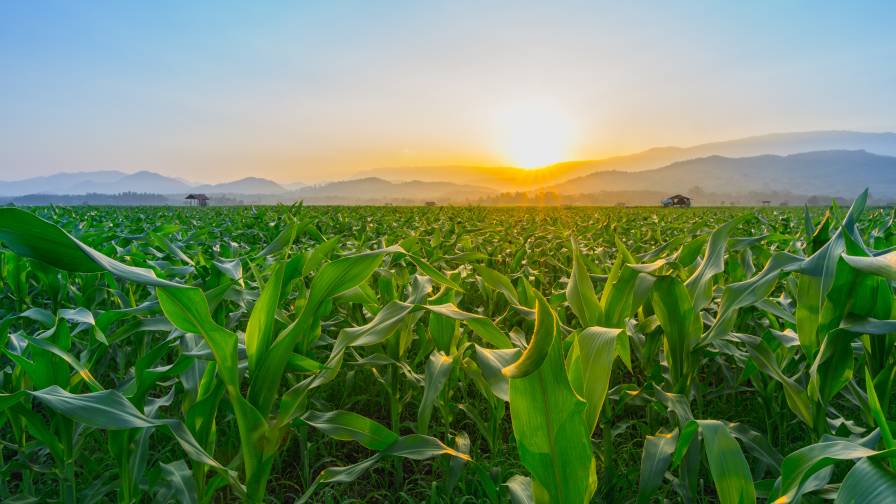Global Nitrogen Outlook: 4 Key Market Drivers to Watch in 2021

There are several factors to consider as the world entertains nitrogen demand during the upcoming growing season.
Having grown up in a farming community, then working in agriculture for more than 25 years, I have witnessed the exceptional resiliency of North American farmers many times, writes CF Industries’ Bert Frost at CropLife.
After 2019, I thought I had seen our industry overcome among the most significant challenges we would ever face: Historic flooding in the spring that disrupted fertilizer applications and planting followed by poor weather in the fall that disrupted the harvest.
As we all know, the agriculture community faced even more challenges in 2020. The COVID-19 pandemic created extreme uncertainty across the economy, including for key crop consuming industries such as ethanol and animal feed. Despite this unprecedented challenge, North American farmers did what they always do: Efficiently and responsibly plant and harvest the world’s best farmland, ensuring our food supply was not disrupted. As one of the key suppliers of nitrogen fertilizer in the region, we were proud to do our part to ensure the agricultural supply chain worked as it should.
The uncertainty that farmers faced affected our outlook early in 2020 as well, particularly for industrial uses of our products. Nevertheless, the global nitrogen market proved resilient. Demand for agricultural applications grew in 2020, and industrial demand continued to recover from the disruptions in April and May.
As we look ahead to 2021, we expect that the key factors driving the global nitrogen market in the past few years will remain the same: Demand in North America, India, and Brazil and global energy prices, particularly anthracite coal prices in China. What is different from 2020 is the context in which these dynamics will play out, particularly improved farm economics in North America and higher energy prices in Europe and Asia. We believe that these developments will support a firm outlook for the global market in at least the first half of the 2021 as nitrogen products continue to provide farmers with tremendous value relative to their cash costs.
Improving Farm Economics in North America Expected to Drive Nitrogen Demand
The most positive development to come out of the challenging year the agriculture industry has faced is the financial position of crop producers in North America. Cash receipts for crops in 2020 in the U.S. are expected to be at their highest since 2014. As I write this, near-term crop prices for many crops are at their highest levels in several years.

CF Industries projects in excess of 90 million planted corn acres in the U.S. in 2021, in line with levels of the last 10 years.
Profitable futures crop prices for nitrogen-consuming coarse grains suggest a positive outlook into 2021. CF Industries projects in excess of 90 million planted corn acres in the U.S. in 2021, in line with levels of the last 10 years. Plantings will be supported by corn futures prices, which have increased approximately 30% since the end of July on lower expected 2020 corn supplies, strong feed and export demand, and recovering ethanol production.
We also project increased canola plantings in Canada. Last year, Canadian farmers had the lowest canola harvest since 2015. These low production levels and current high futures prices will provide support for an increase in canola plantings in 2021.
As a result, we project a stable level of nitrogen demand in North America in 2021.
Global Demand Remains Strong
Outside of North America, we continue to expect positive demand for nitrogen in most growing regions, particularly India and South America. India and South America (led by Brazil) are the largest urea-importing regions in the world. Each imports more urea than North America.
India’s tender process, where government entities request bids for large quantities of urea a limited number of times per year, will ensure that India’s role in global urea prices remains outsized. When India is purchasing, global prices tend to be higher. When the country is not, suppliers to India have to find different outlets for their product, which typically causes prices to drop. Favorable weather in India has supported record urea tender volumes in 2019 and 2020. We project urea tender volumes in 2021 to ease from record highs, but to be above the five year average of 6.5 million to 7 million metric tons.
Brazil, in contrast, will import nitrogen throughout the year to meet demand in its fertilizer application season much like North America. We believe that improved farm incomes and the lack of active domestic urea production in Brazil will continue to support demand for approximately 6.5 million metric tons of urea imports in 2021.





